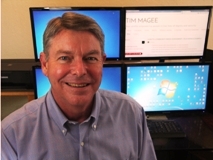Jumpstart Your 1st Project: 4 Powerful Steps to Design-Fund
Jumpstart Your 1st Project: 4 Powerful Steps to Design-Fund Compilation of the first four steps in project design for improved funding and management. Earlier this year we looked at the first four steps in designing successful, sustainable, impact oriented projects. Possibly, right now you are beginning a project or program, and a plan for funding […]
Fast Logframe for Project Funding & Management
Chapter 4 Summary of my complementary, 50 page e-book: Four Powerful 1st Steps in Designing & Funding Non Profit Projects. Click here to access a PDF of this week’s finished example of a Fast Logframe for the food bank. Click here to access a PDF of last week’s finished example on evidence based best practices. […]
How To Design Your Non Profit Project Using Needs Assessment
Chapter 2 Summary of my complementary, 50 page e-book: Four Powerful 1st Steps in Designing & Funding Non Profit Projects. Last week we looked at how to do a community needs assessment. This week we look at how to use the results of the needs assessment for cutting edge project design. Click here to […]
Don’t you want your project to work? Evidence based best practices are the key.
Chapter 3 Summary of my complementary, 50 page e-book: Four Powerful 1st Steps in Designing & Funding Non Profit Projects. Click here to access a PDF of this week’s finished example on evidence based best practices for the food bank. Click here to access a PDF of last week’s finished example on project solution activities. […]
How To: Community Needs Assessment—Plus Bonus Example
Chapter 1 Summary of my complementary, 50 page e-book: Four Powerful 1st Steps in Designing & Funding Non Profit Projects. Click here to access a PDF of this week’s full discussion on participatory needs assessments. Click here to access a PDF of this week’s finished example on needs assessments. Chapter 1 Summary of my complementary, […]
Non Profit Survey Results: Getting the Job Done
Download a PDF of the analysis and solution descriptions. See a graphic presentation that shows the interrelationships within the challenges and details the solutions. Survey Results: Analysis & Solutions First, thanks to all of you who filled out the survey: “Non Profits: What Can’t You Get Done in Your Work Week?” You can see the […]
Challenges, Solutions & Funding Interviews: Meet the People
In last month’s newsletter—Nonprofit Interviews: Challenges, Solutions & Funding—I wrote about 16 non profit organizations that I interviewed in California. I wanted to see firsthand what challenges this range of nonprofits was facing and what goals they were hoping to achieve over the next 12 months. I published a detailed list of the results in […]
Can you identify? Nonprofit Interviews-Challenges Solutions Funding
Can you identify with these results? Nonprofit Interviews: Their Challenges, Solutions & Funding Plans In May, I was fortunate enough to visit 16 non profit organizations in Southern California—all within easy reach of Claremont, California where we will be holding a training workshop in September in partnership with Pitzer College. To get more background, feel […]
How To Design & Fund: International Development NGO Projects Syllabus
How To Design & Fund: International Development NGO Projects Syllabus Back to How To Design & Fund International Development Projects INTRODUCTION 1. About Your Course Teacher: Tim Magee 2. Introduction. How To Design & Fund International Development NGO Projects 3. How to Access & Download Specialized Course Homework Directions and Templates 4. How […]
7 Day Live Workshop in Guatemala: Participants Developed Successful International Project Designs
7 Day Live Workshop in Guatemala: Participants Developed Successful International Project Designs 7 Day Live Workshop in Guatemala: Participants Develop Successful International Project Designs. DIPLOMA 340: Blended Online/Live Workshop Training Program Designing & Funding Sustainable, Community Based Adaptation Projects Guatemala Live International Training Workshop Held in Guatemala The live workshop that began on September 28 […]
CBA Course Field Assignment Templates Now Available Online
A Field Guide to Community Based Adaptation A Field Guide to Community Based AdaptationBy Tim Magee Foreword by Howard WhitePublished December 14th, 2012 by Routledge – 248 pages Purchase at Amazon US: Now available in a Kindle editon Download a Kindle Sample Purchase at Routlege UK Read the Table of Contents and the Introduction Tim […]
Rio+20: Community based adaptation will kick-start a green economy
Community-based adaptation to climate change offers sustainable solutions to our future’s green entrepreneurs: hundreds of millions of smallholder farmers. Community based adaptation (CBA) is a cross-cutting initiative that integrates adaptation, environmental restoration, mitigation, and disaster risk reduction—and includes these participatory approaches to sustainable development and poverty reduction: 1. Participatory assessment of cropping systems, soil health, […]
4 New Videos on Community Based Development
4 New Videos on Community Based Development Exciting news: We are adding videos to our online training programs. THE VIDEOS We have developed the videos—three of which provide an introduction to community based programming—and one of which is an actual “how to” assignment screencast on developing a project outline from a participatory, community needs assessment. […]
New Video on Designing & Funding Non Profit Projects
If you work with a nonprofit on programs such as food banks, animal welfare, teen drop-in centers, homeless shelters, day care centers, the arts, education, health, human services, community development, or environmental restoration, this new, short video will help you see how to develop sustainable, fundable projects. Watch the new video on designing and […]
New Videos: Non Profit Mentoring & Coaching Programs
If you work with a nonprofit on programs such as food banks, animal welfare, teen drop-in centers, homeless shelters, day care centers, the arts, education, health, human services, community development, or environmental restoration, these two new videos on our Non Profit Mentoring Program and our Non Profit Coaching program, will help you see how to […]
